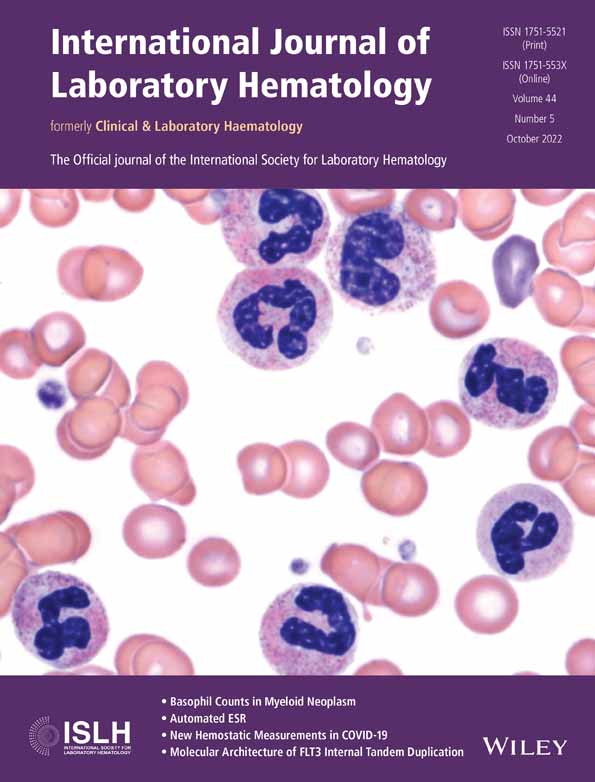Thromboelastography in guiding preventive platelet transfusion in patients with haematologic diseases
Abstract
Objective
This study analysed the relationships between the main thromboelastography (TEG) parameters, the platelet (PLT) count and clinical bleeding in patients with blood diseases. We explored the threshold of the relevant parameters in the pathological condition of bleeding, aiming to scientifically guide clinical prophylactic PLT transfusion.
Methods
In total, 268 patients with clear diagnoses of blood diseases and thrombocytopenia were enrolled and divided into five groups, A, B, C, D and E, corresponding to PLT counts of 0–10 × 109/L, 11–20 × 109/L, 21–30 × 109/L, 31–50 × 109/L and 51–100 × 109/L, respectively. TEG and routine blood testing were performed simultaneously, the main TEG parameters and the PLT count were analysed, and the thresholds of the main TEG parameters in each group when the patient had bleeding were obtained.
Results
The maximum amplitude (MA) in groups A, B and C increased gradually, with a significant difference between each pair of these groups (P < 0.05). In groups A, B, C, D and E, the corresponding MA at the time of bleeding was 43.5 mm, 39.6 mm, 38.0 mm, 35.2 mm and 50.5 mm, respectively, with statistically significant differences (P < 0.05).
Conclusions
The MA can be used as a reference indicator for preventive PLT transfusion to a certain extent. When the PLT count is within different ranges, the MA threshold for preventive PLT transfusion also differs. It is recommended that different PLT counts be correlated with different MA thresholds to guide clinical prophylactic PLT transfusion.
CONFLICT OF INTEREST
All authors declare no conflicts of interest.
Open Research
DATA AVAILABILITY STATEMENT
Data sharing is not applicable to this article because no data sets were generated or analysed during the current study.




